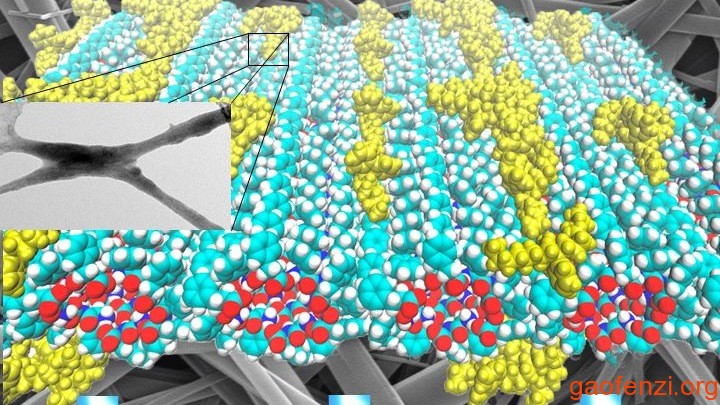【科研进展】据了解,美国佬一年废弃手机数量达到1.5亿部,加上计算机等其它电子设备,全球每年的废弃电子设备数量巨大,根据WTO报告,这些废弃电子设备对环境和身体造成重大的风险,对其回收使用技术工艺复杂。于是乎,有科研人员开始思考是否可以制备环保生物可降解的电子设备,如果技术成熟,电子垃圾问题有望最终得到解决。

(图片来源:University of Missouri,Researchers Take First Steps to Create Biodegradable Displays for Electronics)
看似不可能的想法,真的有科研人员做到了,来自University of Missouri的科研人员近日发表科研成果,揭露可以通过多肽自组装作为电子显示器模板,使其能够使其满足显示器发光的需求。科研人员表示这项研究开创了创建可降解生物电子显示技术的第一步。
参考文献:Self-Assembled Peptide–Polyfluorene Nanocomposites for Biodegradable Organic Electronics,Advanced Materials Interfaces,Volume 2, Issue 14, September 22, 2015。
摘要:Based on self-assembly and mimicking strategies occurring in nature, peptide nanomaterials play a unique role in a new generation of hybrid materials for the electronics of the 21st century. This report describes the functionalization of diphenylalanine (FF)-based micro/nanostructures with blue-emitting conducting polymers of the polyfluorene (PF) family. The FF:PF polymer nanocomposites are synthesized by a liquid-vapor phase method. Electron microscopy images reveal di-octyl-substituted PF (PF8) to bind better to the FF micro/nanotubes in comparison with ethyl-hexyl PF (PF2/6), which influences its optical properties. Molecular dynamics simulations of FF nanotubes with monomeric units of PFs show that PF8 favors greater proximity to the grooves on the surface of the nanotubes due to a higher van der Waals interaction energy compared to PF2/6. The FF:PF nanocomposites are further utilized in light-emitting diodes. Biodegradability tests from FF:PF8 nanocomposite films show more than 80% weight loss in 2 h by enzymatic action compared to PF8 pristine films, which do not degrade. Self-assembly of FF nanostructures with organic semiconductors opens up a new generation of biocompatible and biodegradable materials in organic electronics.
转载本文请注明来源:高分子网gaofenzi.org,违者必究。